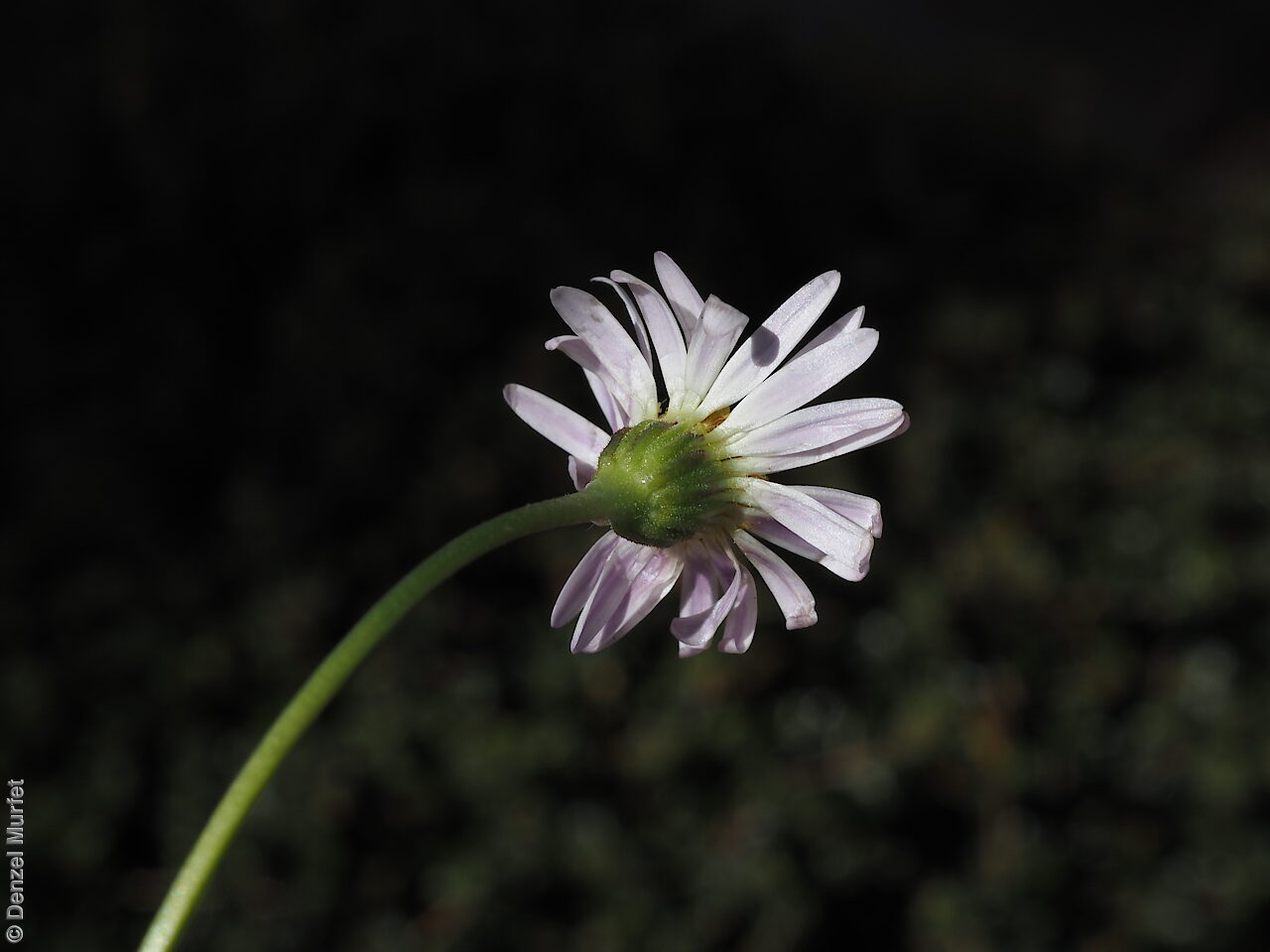















Botanical art
Prior names
Brachyscome angustifolia
Bellis graminea
Brachycome graminea
Etymology
Brachyscome from the Greek 'brachys' meaning short and 'kome' meaning hair, referring to the tufts of short bristles or hairs of the pappus. Graminea from the Latin 'gramen' meaning grass, alluding to the grass-like appearance of the species.
Distribution and status
Few records from the southern Mount Lofty Ranges and the lower South-east in South Australia, growing in moist areas from swamps to saline marshes and along watercourses. Also found in New South Wales, Victoria and Tasmania. Native. Rare in South Australia. Common in the other States.
Herbarium regions: Murray, Southern Lofty, South Eastern, Green Adelaide
NRM regions: Adelaide and Mount Lofty Ranges, South Australian Murray-Darling Basin, South East
AVH map: SA distribution map (external link)
Plant description
Stoloniferous perennial herb to 70 cm high with weak, ascending to erect, often branched, sparsely hairy stems. Leaves often crowded near the base of the stem, sessile, erect, linear to oblanceolate, narrow at the base, entire, acute, to 14 cm long and 7 mm wide, grass-like glabrous, with a prominent mid-vein, Flowers white daisy on long stalk appearing mostly through the warmer months but may flower all year if conditions are suitable. Fruits are brown daisy-heads. Seeds are yellow to pale-brown, flat ovoid seed to 2.5 mm long and 2 mm wide. Seed embryo type is spatulate fully developed.
Seed collection and propagation
Collect seeds between January and March. Pick heads that are maturing, drying off, with brown seeds that dislodge easily. Place the seed-heads in a tray and leave to dry for a week. Then gently rub the heads by hand to dislodge the seeds. Use a sieve to separate the unwanted material. Store the seeds with a desiccant such as dried silica beads or dry rice, in an air tight container in a cool and dry place. Seed viability can be average. This species may have physiological dormancy that needs to be overcome for the seed to germinate. Summer or spring/autumn conditions promote high germination rates. The species has a requirement for fluctuating day/night temperatures, rather than constant temperatures. Germination can be improved with moist stratification (5oC for up to six months) or dry after-ripening (30 - 45oC for six months).
| Location | No. of seeds (weight grams) | Number of plants | Date collected | Collection number Collection location | Date stored | % Viability | Storage temperature |
|---|---|---|---|---|---|---|---|
| BGA MSB | 7,200 (2.43 g) 1,000 (0.52 g) | 100+ | 31-Jan-2008 | PJA169 South Eastern | 1-Jun-2010 | 65% | -18°C |
| BGA | 4,000 (2.06 g) | 100+ | 27-Mar-2008 | PJA168 South Eastern | 1-Jun-2010 | 90% | +5°C, -18°C |
| BGA | 4,100 (2 g) | 100+ | 11-Feb-2009 | DJD1495 South Eastern | 1-Jun-2010 | 80% | -18°C |
| BGA | 10,600 (4.62 g) | 17-Mar-2009 | DJD1495 South Eastern | 1-Jan-2012 | 80% | +5°C, -18°C | |
| BGA | 9,700 (1.79 g) | 100+ | 23-Feb-2016 | DJD3334 Southern Lofty | 2-May-2017 | 75% | +5°C, -18°C, -80°C |
| 200+ | 11-Feb-2009 | DJD1495 South Eastern | 1-Nov-2017 | 80% | -18°C | ||
| BGA | 3,300 (0.930 g) | 28-Mar-2021 | DEM9839 Southern Lofty | 28-Jun-2021 | 95% | -18°C |
Number of plants: This is the number of plants from which the seeds were collected.
Collection location: The Herbarium of South Australia's region name.
% Viability: Percentage of filled healthy seeds determined by a cut test or x-ray.